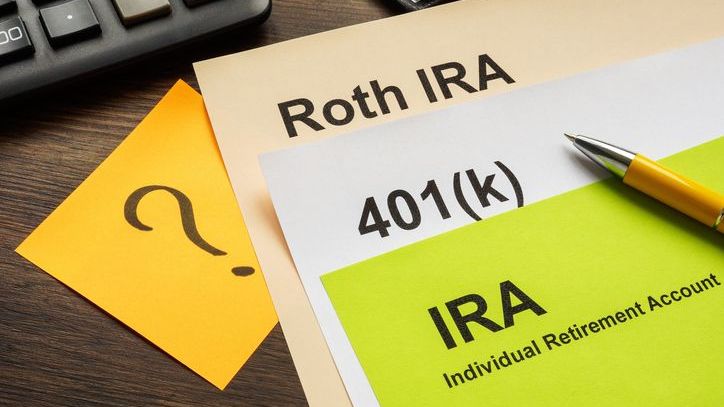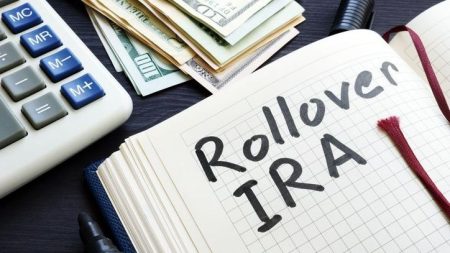Determining when to start saving for retirement can have a major impact on your financial future. Beginning early allows you to take full advantage of compound interest, which is when you earn money on both your savings and the interest you’ve already earned. Starting to save in your 20s or 30s provides a longer time horizon for your money to grow, even with modest monthly contributions. But even if you begin later in life, disciplined saving and investing can still lead to a comfortable retirement.
A financial advisor can help you plan for your future retirement regardless of your age or goals.
Start Saving as Soon as Possible
Saving for retirement is a key component of financial planning, and beginning early can have several long-term benefits. The sooner you start saving for retirement, the sooner you can take advantage of the following:
- Compound interest: The power of compound interest is one of the primary reasons why starting as soon as possible can lead to a more secure financial future. When you invest money, the returns you earn also start generating returns, creating a snowball effect over time. This can lead to substantial growth, particularly over several decades.
- Flexibility in your investment strategy: With a longer time horizon, you can afford to take on more risk, potentially reaping higher returns. Younger investors have the advantage of being able to ride out market fluctuations, as they have more time to recover from any downturns.
- Good financial habits: Regularly setting aside a portion of your income for retirement can become second nature when you start early, making it easier to stay on track with your savings goals. Starting early also reduces the pressure to save large amounts later in life, allowing for more manageable contributions over time.
The Cost of Waiting
Delaying retirement savings by even a few years can lead to less growth. The extra years allow your investments to compound, creating a snowball effect that can lead to exponentially greater savings over time. Starting early means your contributions have more time to grow, potentially resulting in a more comfortable and secure retirement.
Consider two hypothetical workers, Alex and Jordan. Alex starts saving for retirement at age 22, contributing $500 a month to a retirement account with an average annual return of 7%. By the time Alex reaches 67, the retirement account could grow to approximately $1.7 million.
On the other hand, Jordan starts saving at age 32, contributing the same $500 a month with the same average annual return. By age 67, Jordan’s retirement account might grow to around $856,000. Despite saving for only 10 years longer, Alex has approximately twice as much money as Jordan thanks to the additional decade of compound growth.
| Alex | Jordan | |
|---|---|---|
| Starts saving at age | 22 | 32 |
| Saves until age | 67 | 67 |
| Number of years contributing to retirement account | 45 | 35 |
| Monthly contribution | $500 | $500 |
| Balance at retirement | $1.7 million | $856,000 |
How Much Should You Have Saved at Different Ages?

Planning for retirement involves strategic saving throughout different life stages. Understanding how much to set aside at each age can help you stay on track and ensure a comfortable future. Here’s a decade-by-decade breakdown to guide your retirement savings journey.
In Your 20s
Starting early leverages the power of compound interest, impacting your retirement savings for decades to come. In your 20s, aim to save 10-15% of your income annually. Striving to have the equivalent of your annual salary saved by the end of your 20s is a good target. For instance, if you earn $50,000 per year, look to save $50,000 by age 30. Contributing to employer-sponsored retirement plans, like a 401(k), and taking advantage of any matching contributions can boost your savings.
In Your 30s
As you advance in your career, you should increase your savings rate. Aim to have double your annual salary socked away by the time you reach 35. For example, if you earn $60,000 annually, your retirement account should ideally hold $120,000 by your mid-30s. This decade often brings higher earning potential and increased financial responsibilities. Balancing these with consistent savings will help keep your retirement goals on track. Maximize contributions to tax-advantaged accounts and consider consulting a financial advisor to refine your strategy.
In Your 40s
By your 40s, retirement planning should be in full swing. Aim to have three to four times your annual salary saved by age 40 and four to five times by age 45. For instance, if your income is $80,000, your savings goal would be $320,000 by 45. This period may also include peak earning years, allowing for higher contributions. You should also reassess your investment portfolio around this time to ensure it aligns with your retirement timeline and risk tolerance.
In Your 50s
With retirement approaching, focus on ramping up your savings. Aim to have six to seven times your annual salary saved by age 50. For example, an annual income of $90,000 translates to a savings goal of between $540,000 and $630,000 by 50. Take advantage of catch-up contributions available in retirement accounts for those 50 and older. This can help you build your retirement nest egg significantly. Also, consider reducing debt and planning for potential healthcare expenses.
In Your 60s
As retirement nears, plan to have eight times your annual salary saved by age 60. For instance, if you earn $100,000, aim to have around $800,000 in savings. Fidelity Investments recommends you have 10 times your annual salary saved by age 67 – the full retirement age for anyone born in 1960 or later. Evaluate your retirement income sources, including Social Security, pensions and investments. Adjust your investment approach as needed to protect against market volatility and to ensure your assets last throughout retirement.
Ways to Save for Retirement

There’s more than one strategy to save for retirement. Diversifying savings methods can help manage risk and maximize potential growth, setting you up for a more secure financial future.
Each option below offers unique benefits and combining them can create a robust retirement plan.
Employer-Sponsored Plans
Employer-sponsored plans, such as 401(k) and 403(b) accounts, are common retirement savings tools. You typically make contributions with pre-tax dollars, which can lower your taxable income. Employers may offer matching contributions, which is essentially free money for retirement.
IRAs
Individual retirement accounts (IRAs) offer another route to save for retirement without relying on access to an employer-sponsored plan. Traditional IRAs provide tax-deferred growth, meaning taxes are paid upon withdrawal. Roth IRAs, funded with after-tax dollars, allow for tax-free withdrawals in retirement. Each type has its benefits depending on current tax situations and future expectations.
Health Savings Accounts
Health savings accounts (HSAs) can be an effective, though often overlooked, retirement savings vehicle. HSAs provide a trio of tax benefits: you can deduct contributions from your taxable income, the account grows tax-free and withdrawals for eligible medical expenses are not taxed. After age 65, you can use funds for non-medical expenses without penalty, though they are subject to income tax.
Brokerage Accounts
Brokerage accounts provide flexibility and a wide range of investment options, including stocks, bonds and mutual funds. Unlike retirement-specific accounts, they don’t have contribution limits or early withdrawal penalties. While they lack the tax advantages of other retirement accounts, their flexibility can be valuable for those looking to diversify their retirement savings strategy.
Bottom Line
Starting early with retirement savings allows you to leverage compound interest, giving your investments more time to grow and potentially leading to a more comfortable retirement. By saving consistently, modest contributions can accumulate significantly over the years, especially when combined with strategic investment choices. The ability to take on more risk in the early stages of your career while developing consistent saving habits can set a solid foundation for financial security in later years. Even if you begin saving later in life, saving diligently and making informed investment decisions can still lead to a substantial nest egg for your future.
Retirement Planning Tips
- Proper planning for required minimum distributions (RMDs) can help you avoid costly penalties and ensure a smooth retirement income strategy. RMDs, mandated by the IRS, require you to withdraw a minimum amount annually from your tax-deferred retirement accounts starting at age 73. Failing to take your RMD can result in hefty penalties, significantly impacting your retirement savings. To accurately calculate your RMDs and plan your withdrawals effectively, consider using SmartAsset’s RMD calculator.
- Whether you need help planning for RMDs, building a sustainable income plan or improving the tax efficiency of your portfolio, financial advisors an help you tackle your retirement planning needs. Finding a financial advisor doesn’t have to be hard. SmartAsset’s free tool matches you with up to three vetted financial advisors who serve your area, and you can have a free introductory call with your advisor matches to decide which one you feel is right for you. If you’re ready to find an advisor who can help you achieve your financial goals, get started now.
Photo credit: ©iStock.com/designer491, ©iStock.com/fizkes, ©iStock.com/Jacob Wackerhausen
Read the full article here
















